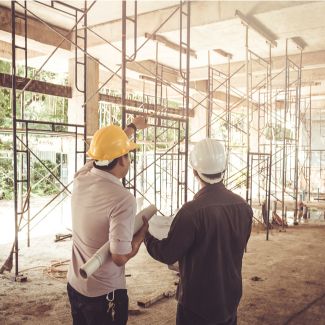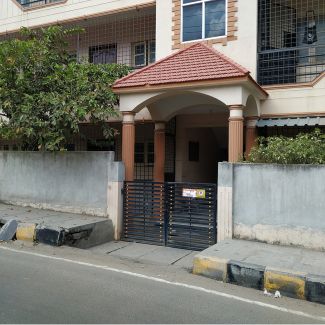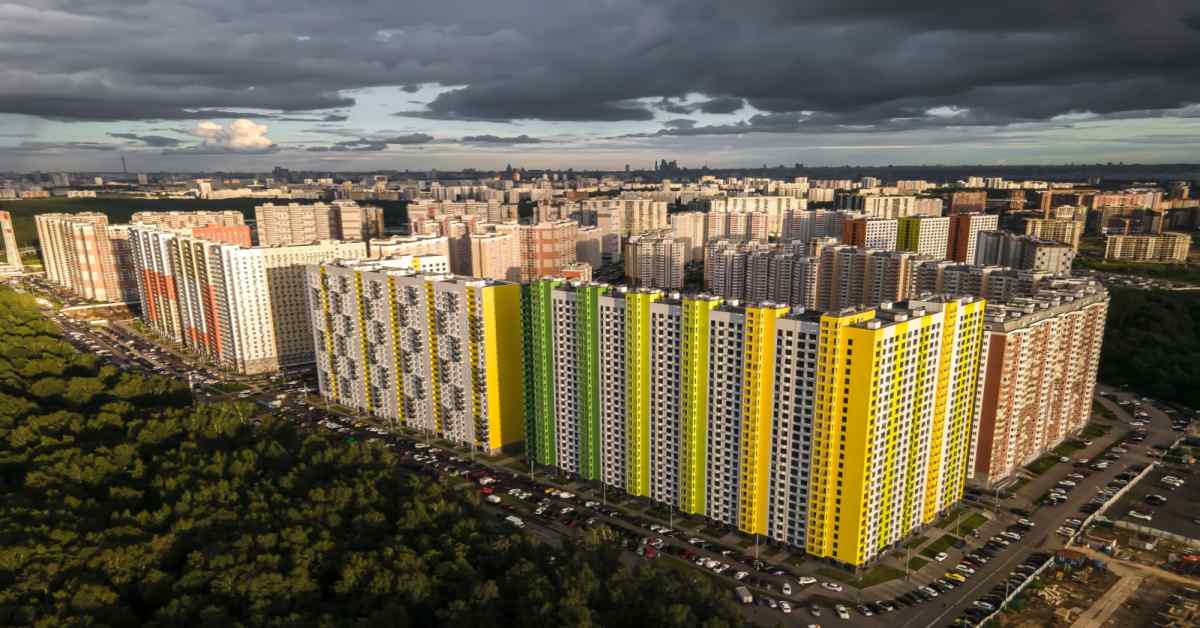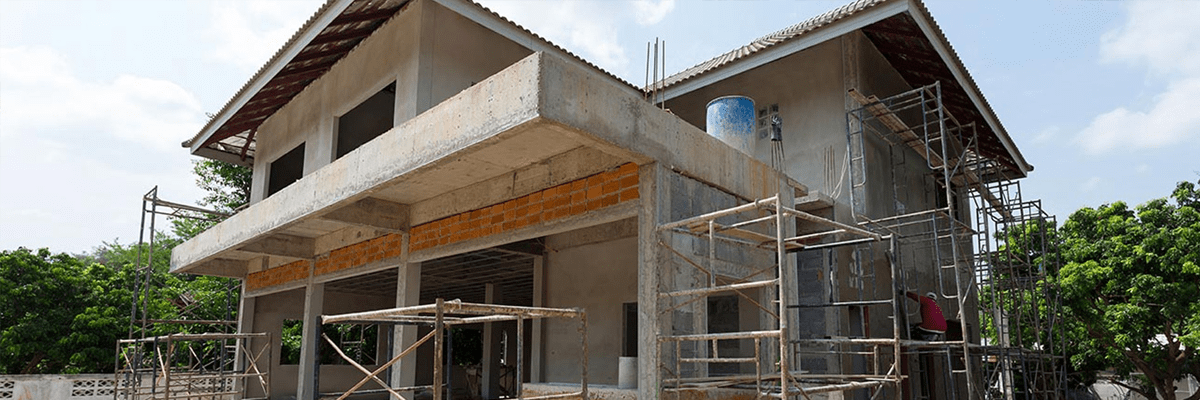Table of Contents
Quality Service Guarantee Or Painting Free

Get a rental agreement with doorstep delivery

Find the BEST deals and get unbelievable DISCOUNTS directly from builders!

5-Star rated painters, premium paints and services at the BEST PRICES!
Loved what you read? Share it with others!


Submit the Form to Unlock the Best Deals Today
Help us assist you better
Check Your Eligibility Instantly

Experience The NoBrokerHood Difference!
Set up a demo for the entire community
What Is Floor Area Ratio / Floor Space Index and Why Is It Important for Homebuyers?
Table of Contents
If you are planning to invest in real estate, you would invariably come across some obscure transactional jargon that is complex. However, understanding them is essential as they play a role in your property purchase decisions. Understanding all legal terms adequately and gathering relative information regarding the real estate market is necessary to make the right decision.
Floor area ratio (FAR) or floor space index (FSR) are two such terms, which mean the same thing, but often confuse buyers due to their complex nature. Now we know what they stand for, but what is floor area ratio or floor Space index, and how does it affect your real estate investment?
We have the answer, but to figure out all about FAR and FSI, you must first understand the construction process. Let’s start with that -
Quality Service Guarantee Or Painting Free

Get a rental agreement with doorstep delivery

Find the BEST deals and get unbelievable DISCOUNTS directly from builders!

5-Star rated painters, premium paints and services at the BEST PRICES!
Before initiating any construction project, developers in that area are required to submit and get building layouts approved from the planning department of the respective zone. It includes all the necessary information regarding the structure of the building and the land in use. Developers are required to add data like height, total gross floor area, and the proposed density of the building. Density can be calculated with the help of the floor area ratio (FAR). It is also commonly known as the floor space index (FSI). Every zoning district is allotted a unique FAR that helps determine real estate feasibility in that area. To learn more about FSI calculation, read on.
What Is the Floor Area Ratio or Floor Space Index?

To define floor area ratio, we need measurements of the total usable floor area and the full size of the property. FAR is calculated by taking the total gross floor area (GFA) percentage to the entire property area. The gross floor area includes a total floor area up to the outer face of the walls outside the building. FAR is a decimal value and can be lower or greater than 1. The floor area ratio of 1.0 indicates that the entire property area is usable. Values lower than 1.0 indicate that some land remains empty and values higher than 1.0 indicate that there are multiple storeys in the same building. As per the Development Control Regulations (DCR) guidelines, FAR is decided by municipal corporations and can vary from one city to another. Even different localities can have different FAR values allotted.
FAR and FSI are two different ways to indicate the same quantifiable characteristic, i.e., the area's density. However, FAR is always expressed with the help of a decimal value, while FSI is a per cent value. For example - FAR of 1.2 denotes that the FSI of that particular land is 120%.
Why is Floor Area Ratio Important?
Every city has a certain amount of usable space. Further use of the space puts an unnecessary burden on the system. The FAR serves as what is commonly referred to as the safe load factor. The floor area ratio fluctuates due to population dynamics, growth patterns, construction activities, and the different types of land that are used to build different buildings. Varied safe load factors apply to industrial, residential, commercial, agricultural, and non-agricultural spaces, and as a result, these spaces often have different FARs. Governments ultimately implement rules and limitations that determine FAR.
What Is the Floor Area Ratio Formula or FSI Calculation Formula?

Floor Area Ratio is calculated by the formula:
FSI = Built-up area / Plot area
Floor area Ratio Examples:
If a property of area 5000 square feet is assigned FAR of 1.0, it means that a 5,000 square foot (sq. ft) building stands on a 5,000 sq. ft plot.
If it is assigned an FAR of 0.5, a 2,500 square foot (sq. ft) building stands on a 5,000 sq. ft plot.
If it is assigned FAR of 2.0, a 2,500 square foot (sq. ft) building, with four floors stands on a 5,000 sq. ft plot or a 5,000 square foot (sq. ft) building, with two floors stands on a 5,000 sq. ft plot.
What Are the Common Factors That Impact FSI?

FSI is determined by the municipal corporation of the respective zone, and this value can differ from city to locality. FSI value is dependent on the city regulations and geographical constraints of the location.
Some of the common factors that impact permissible FSI or the floor area ratio are:
- Size of the property
- Type of building (commercial building, residential flats, etc.)
- Location of the building
- Availability of basic amenities like power, water, sewer lines etc
Generally, it is observed that FSI in the old and established parts of the city differs from the FSI in the more upcoming and developing areas. Depending on the value of land and the development requirements, the city can alter the FSI value at any given point in time. Understanding floor area ratio can be varied because of additional constraints like porches, driveway, shafts, lifts, service areas etc. For example - the basement parking area and stilt parking area are not included in the FSI according to the guidelines of Mumbai. However, some other cities might count covered parking areas under FSI.
What’s the difference between Floor Area Index and Floor Space Index?
The unified development codes that apply in different cities are FAR and FSI. Both phrases have to do with the real estate industry. This FAR/FSI ratio is calculated by dividing a building's built-up area by the plot's overall plot area. As a result, FSI and FAR are the same.
FSI or FAR = Built Up Area/Total Area of the Plot
In America, the ideas of FAR and FSI were first presented. Additionally, it was developed for building control to assist architects in designing a building in accordance with the provided ratios. However, FAR and FSI are synonyms. However, individuals in other nations tend to use the term FSI more commonly while Indians prefer to use the term FAR.
Significance of FAR for Home Buyers

Every homebuyer needs to assess certain legal formalities and check the nature of specific construction constraints before purchasing the property. One such important aspect to watch out for is the floor area ratio or the floor space index. FSI, meaning in construction, defines the area density of the respective property. A higher FAR index means that the housing society will be able to construct high rise buildings. The community amenities like pool, gardens, elevators, electricity and water supply etc., will be now divided into a larger group of people. Similarly, a lower FAR index means that there will be fewer people sharing the same community facilities, thus making it a comfortable condition for residents. For individual houses, a higher FAR index indicates that the homebuyer has the permission to construct a home with more usable space or storeys.
Keeping in mind the general constraints like geographical location of the project, the number of residents in that area, availability of open spaces, sustainability of the construction plan, the density of population etc., the municipal corporation decides the FAR value. Usually, this value does not exceed the value of 2.5 to ensure the availability of sufficient open space in cases of natural disasters. FAR value also provides firm and stable growth of the building plan. Therefore, a homebuyer should look for a property with a lower FAR index so that they can get an adequate portion of the basic amenities and privacy.
Why Is the Floor Area Ratio Important for Developers?

Real estate developers depend on a higher FAR value to make additional profit. The vertical growth of buildings is dependent on the FAR index allowed in that particular area. A higher FAR value means that the developer will construct a Highrise building and sell more housing units to people. The urbanisation of developing regions and housing for all schemes help developers more profit and reduce the gap between demand and supply of real estate.
What Is Premium FSI?

If you want to increase the FSI limit beyond the value assigned by the municipal corporation, you need to pay extra to the authorities, these extra charges are called the premium FSI fund. But you can only avail this benefit if the abutting road is at least 30 feet wide.
- 30 to 40 Feet Road Width – 20 % Premium FSI
- 40 to 60 Feet Road Width – 30 % Premium FSI
- Greater than 60 Feet Road Width – 40 % Premium FSI
For example - if the road abutting your land is 50 feet wide, you can construct your building at an FSI index that is 30% more than the original FSI value. This increased FSI is known as premium FSI.
Floor Area Ratio Benefits
FAR rules and regulations help to moderate construction and, to a certain extent, assure a building's structural safety. Without FAR/FSI regulations, the number of unauthorised constructions will climb. The following are a few advantages of FAR:
Open spaces and constructed environments can be distinguished easily.
aids in fostering stable, planned growth for authorities
What Does a Far Violation Entail?

FAR violations are not uncommon. You might have seen high-rise buildings constructed on a small plot of land in your localities. Even though the government has issued a provision for premium FSI in most cities, several cases are still recorded for FAR violations. FAR violations are often caught when the authorities conduct their inspection for a completion certificate. For a homebuyer, this can mean that their home loan might not get approved. For the developer, this can mean that they are liable to face statutory and criminal actions. The authorities can issue a complete or partial demolition for the building and charge the developer for constructing illegal buildings.
Therefore, before purchasing a house in the project, buyers of homes should request to see the completion certificate. If you were to seek for a loan after purchasing a property in a project that had broken the city or locality FAR restrictions, it might seriously affect your credit worthiness.
Myths And Facts Regarding the Floor Area Ratio

One of the most widespread myths in the real estate market is that a higher FAR value is the solution for affordable housing and ensures that the price for property decreases. However, this is not true. Higher FAR/FSI comes at an additional cost which developers have to pay to the appropriate authorities. Suppose the FAR/FSI did not arrive at an additional cost. In that case, the developer could increase the number of floors in the building, thus alleviating the price of firefighting, parking, environment clearance, etc. Tall buildings require more basement parking space, which stretches on the developer's budget and eventually the homebuyer.
FAR In Group Housing

To calculate the number of residential units, you need to know the density pattern given in the development plan by considering that there are 4.5 persons per residential unit. The highest FAR value assigned is 1.25 or 125. There can be a boost in the FAR index, but it should not exceed 150.
Latest Updates on FAR

FAR Hike in Uttar Pradesh
The UP government allowed an amendment in the Greater Noida Industrial Area (Fifth Amendment) Building Regulations, 2021. IT and other sector companies will now have the permission to construct double the number of floors than what was initially allowed. Non-polluting industrial units have a FAR index of 4.25, out of which 2 is given during allotment, and the remaining 2.25 is a premium value.
Maharashtra - Possible Reduction in FAR Premium Fee
To boost the declining real estate market, the state government may reduce the FAR premium fee paid by the developers. State also decreased the ready reckoner rates by 40-50% in the past year.
Punjab Local Bodies Department to Identify Land for Affordable Housing
To incorporate affordable housing for all, the urban local bodies of Punjab are coming up with determining the appropriate portion of land. Two categories may come up; EWS (Economically Weaker Section) of 60 square metres and MIG (Middle Income Group) of 110 square metres. The decided FAR for both categories is 3.50.
Owning real estate is a momentous feat for anyone. Along with the struggles of finding the right piece of property and arranging the funds, it is essential to keep in mind all the legal factors associated with the house's construction. One such important factor to watch is the Floor Area Ratio (FAR) or Floor Space Index (FSI). Each city or locality may have different FAR indexes based on the geographical region, terrain, availability of open space and basic amenities etc. If you are house hunting and confused about the legalities associated with the real estate market, contact NoBroker. There are experts who can guide you through the entire home buying process. You can even hire NoBroker Legal services, this team is dedicated to helping you with all the paperwork that you require when buying a house! Click the link below to find out more about NoBroker Legal services.

FAQ's
Ans. The floor area ratio or floor space index formula is Built-up area / Plot area.
Ans. For residential complexes, a higher FAR value may mean that you will need to live in a more populated area and share community amenities like a pool, garden, electricity and water supply etc. A lower FAR value indicates that you will have more space and privacy.
Ans. 0.5 FAR means that you can only construct the house in half the plot area.
Ans. The abutting road should at least be 30 feet wide for premium FSI.
Ans. No, the FAR value does not include unoccupied spaces.
Recommended Reading

Understand How to Use A House Construction Cost Calculator
January 15, 2025
3793+ views

What is a Farmhouse and How to Choose the Best One for You?
January 15, 2025
6278+ views

Have a Look at Some of the Best Luxury Villas in Chennai
January 15, 2025
5188+ views

January 15, 2025
6171+ views

Difference Between Flat and Apartment: An Overview
January 15, 2025
11445+ views
Loved what you read? Share it with others!
Most Viewed Articles

Top 26 Cleanest City of India: List of the Best Cities Ranking Wise in 2025
January 22, 2025
110323+ views

Auspicious Dates and Good Nakshatra for Property Registration in 2025
January 27, 2025
68741+ views

CIDCO Lottery 2025 - CIDCO Starts Registration for 5730 Homes in Navi Mumbai
May 29, 2024
56152+ views

Breaking Down House Construction Costs in India: Easy Tips for Your Budget" in better way
December 17, 2024
50978+ views

Builder Floors: A Budget-Friendly Path to Your Dream Home
December 30, 2024
41527+ views
Recent blogs in
Auspicious Dates and Good Nakshatra for Property Registration in 2025
January 27, 2025 by Susan
Hyderabad Property Rates: Price per Square Foot and Rental Trends in Top Areas (Updated 2025)
January 23, 2025 by Pooja
Real Estate Trends and Property Rates in Mumbai for 2025
January 23, 2025 by Vivek Mishra
Top 10 Real Estate Companies in Kolkata in 2025
January 23, 2025 by Krishnanunni H M
Top 26 Cleanest City of India: List of the Best Cities Ranking Wise in 2025
January 22, 2025 by Ananth





Join the conversation!